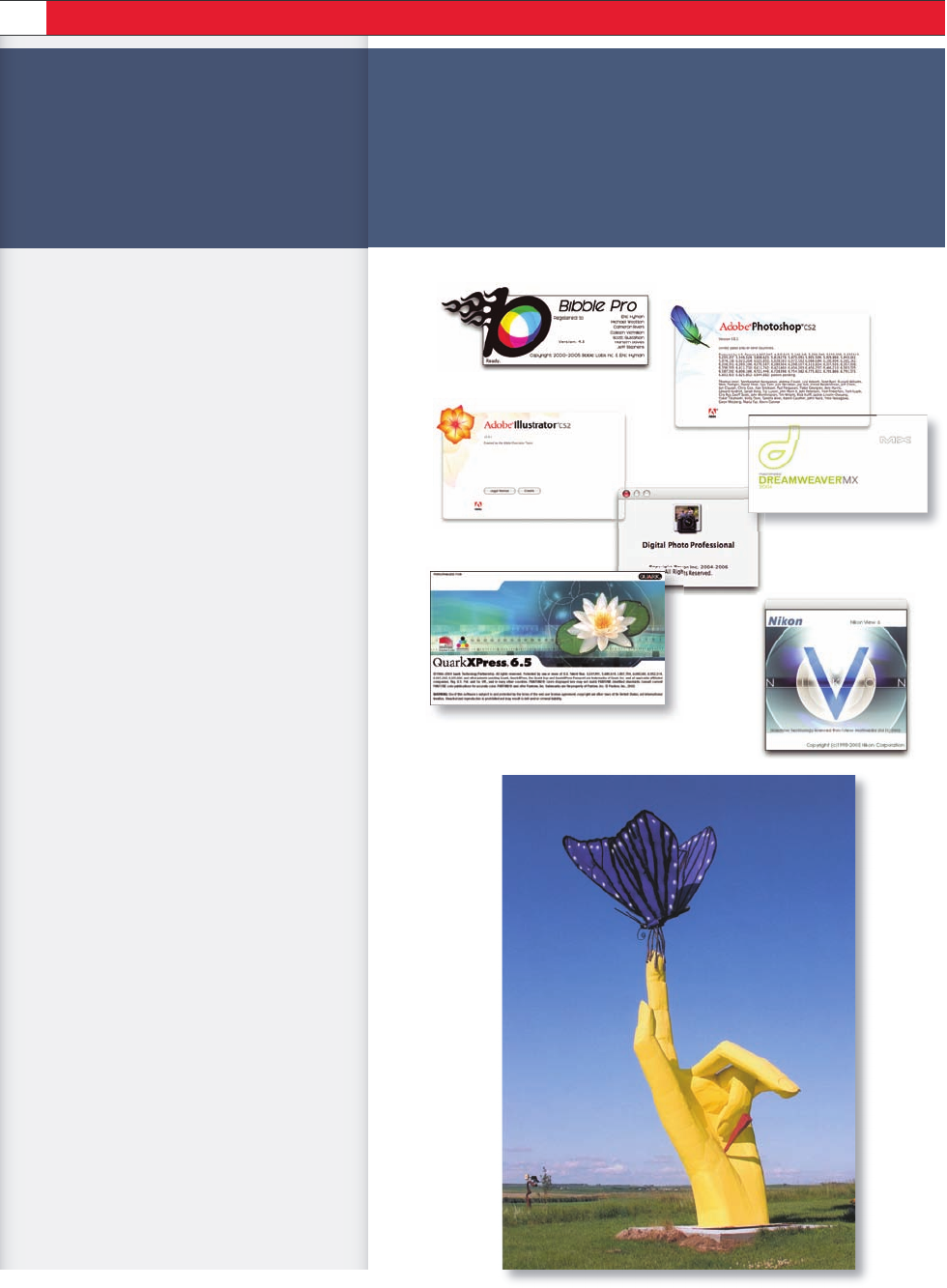
CHAPTER 5: Technically Speaking
132
Some Final CM
Thoughts
As you’ve seen from the examples in this book, there are
many di erent work ow situations in which you might be
working. The one you pick will very much depend on how
you like to work and how much work you have.
We’ve covered some simple scenarios in
this book, but consider all the possible
complexities. Input could come from
client les, di erent digital cameras, and
scanners. Add to the mix a variety of
di erent applications, such as BibblePro,
Photoshop, InDesign, QuarkXPress, and
DreamWeaver. Then, consider outputting
these images to the Internet, printing
presses, and di erent ink-jet printers.
It quickly becomes apparent that there
are many di erent color management
scenarios. The key to implementing
the right color-managed work ow is
understanding the concepts of how color
management works. With the knowledge
that you have gained by reading this
book, you should have a good foundation
for setting up color management with
a number of applications and devices,
including those not covered in this
book. You always have the option of
using outside sources—such as dealers,
vendors, consultants, colleagues, and
trade organizations—to assist you
in implementing a complex color
management system. And we’ve listed
some resources in the Appendix.
ETCM_book.indb 132 10/6/06 5:08:31 PM
Get Practical Color Management: Eddie Tapp on Digital Photography now with the O’Reilly learning platform.
O’Reilly members experience books, live events, courses curated by job role, and more from O’Reilly and nearly 200 top publishers.

